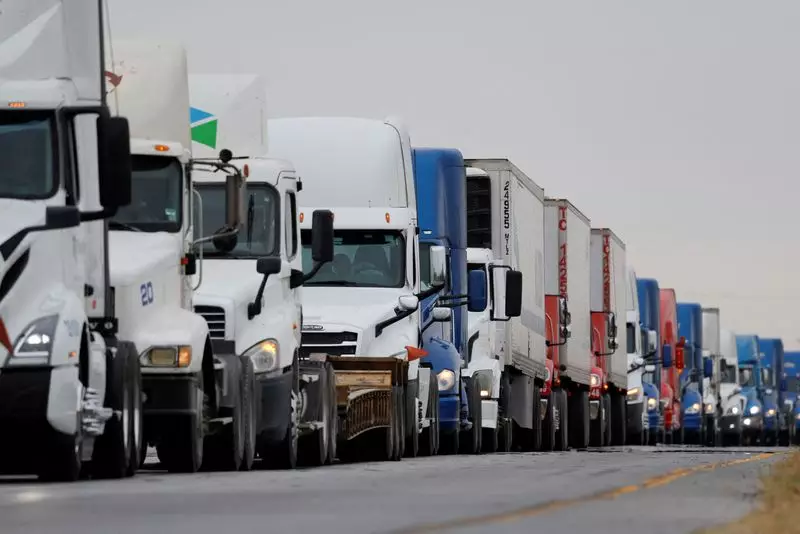Mexico’s economic trajectory in 2025 is characterized by cautious forecasts amidst a backdrop of geopolitical uncertainty and internal challenges. As the second-largest economy in Latin America following Brazil, Mexico is grappling with a projected gross domestic product (GDP) growth rate of only 1.2%, a decline from the previous year’s 1.6%. This stagnation stems from a myriad of factors, including the trepidation surrounding impending changes to U.S. tariffs and immigration policies under the new administration. This article delves into the multifaceted dimensions of Mexico’s current economic challenges, exploring both domestic and international influences that are shaping its outlook.
The specter of high tariffs looms large over Mexico, particularly with the inauguration of U.S. President-elect Donald Trump, who has signaled intentions to impose a 25% tariff on goods crossing the U.S.-Mexico border. As the two countries share a free trade agreement alongside Canada, these potential tariffs threaten to disrupt the robust cross-border exchange that has historically benefitted Mexico’s economy. Economists have pointed out that such a policy shift could lead to diminished export performance and consequently, a suppressed private investment environment. The uncertainty surrounding U.S. policy not only raises questions about trade but also drives trepidation among domestic investors, who may be hesitant to pour capital into a perceived unstable economic landscape.
Private consumption, another key pillar of Mexico’s economic engine, is currently stifled due to high-interest rates and an overall climate of uncertainty. As consumers remain wary, their spending patterns have adjusted downward, which further exacerbates the sluggish nature of economic growth. Fixed investment is similarly impacted as businesses navigate a series of political uncertainties and changing legislative terrains, leading to a hesitancy in expanding operations or enhancing capital expenditures. Notably, this trend has resulted in a decline in investment just when Mexico needs it most to recover and sustain robust growth.
In response to these challenges, President Claudia Sheinbaum’s administration has actively sought to mitigate the potential fallout from tariff threats through a combination of tailored strategies. Among these are initiatives aiming to improve support for low-wage workers and targeted industries that could benefit from increased public investment. For example, measures have been introduced to generally curb imports from China, a step taken in acknowledgment of Trump’s perceptions of Mexico as a transit route for Chinese goods entering the U.S. This not only seeks to bolster domestic manufacturing but also aims to ease trade tensions that could arise should tariffs be imposed.
As the central bank of Mexico, known as Banxico, contemplates its approach in light of these economic pressures, its room for aggressive monetary easing appears limited. Despite a recent decision to cut benchmark interest rates from 11.25% to 10%, further reductions beyond the anticipated 150 basis points by 2025 may not adequately stimulate growth in a high-tariff scenario. Analysts predict a cautious monetary landscape, where Banxico may prioritize a slow and measured approach to interest cuts. Many economists suggest that in the face of heightened trade barriers, maintaining the current course of easing rather than accelerating cuts seems to be a more prudent course of action.
The economic outlook for Mexico in 2025 remains clouded by uncertainty emanating from U.S. political dynamics, diminishing domestic consumption, and an overall sluggish investment climate. While the Mexican government is taking steps to address these challenges actively, including targeted financial support for vulnerable industries and low-wage workers, the road ahead is fraught with risks. The success of these initiatives will crucially hinge upon the outcomes of U.S. policy shifts and the global economic climate in the coming months. Thus, as Mexico eagerly anticipates the policy decisions following Trump’s inauguration, the nation’s economic resilience and capacity for recovery will be tested in unprecedented ways.

